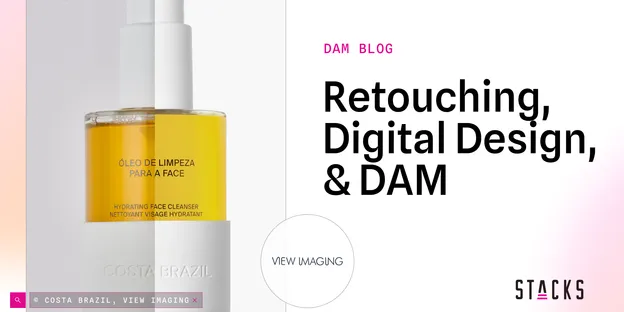Think about the last week of your life. How many times, whether at work or home, via text, phone call, or in person, have you heard someone say, “Check out this video?” Odds are it was probably more than once, especially with the rise of TikTok and Instagram Stories and the integration of Twitter with the day-to-day of our lives. Watching videos is now one of the primary ways we take in the world around us and interact with each other.
PhotoShelter, a leading digital asset management (DAM) software provider, recently assembled some stats that reflect this truth. You can read their entire article on how they manage video content here.
- According to Cisco, by 2022, online videos will make up more than 82% of all consumer internet traffic — 15x higher than it was in 2017 (Cisco).
- People retain 95% of a message they watch in a video, but only 10% when they read it. (Insivia)
- As stated in a December 2021 Wyzowl survey, 94% of marketers say video has helped increase their understanding of a product or service and 86% say it has helped them generate leads.
Based on these stats, it’s very likely that videos are some of the most valuable content in your organization’s digital asset library. Given that, it’s imperative that they’re easy to find, edit, and share. Below, we outline seven ways you can maximize the value of your video content both externally and internally by using DAM principles.

7 Tips for Making the Most of Video Content Using DAM
1. Determine what kind of video content you need, when it should be shared, and how it will be delivered
Now that we’ve established the importance of video content in today’s marketplace, let’s add a somewhat significant caveat. Not all video content is equally valuable or compelling to consumers. While this seems obvious, it's especially important to mention, given that interactions with consumers are measured in seconds and the first several impressions your brand makes can have lifelong impacts on customer behavior.
Video content can hurt your brand if your messaging is inconsistent, your timing is wrong, or the quality of your videos isn’t up to industry standards. Take time to consider what kind of video content will impact your target audience in a positive way, which channels it should be delivered through, and when it should hit the market. Then, get to creating!
2. Map the lifecycle of your video assets
Getting your high-quality video content to the market isn’t as simple as creating it and then posting it on your organization’s Instagram or website. Odds are that your organization’s video content creators use multiple platforms for editing and reformatting the videos they create and then send them to different marketing, sales, or digital teams to distribute to the marketplace.
But what if you need to find a specific video again or a great shot that created a lot of buzz around your brand? Where do video assets live, who manages them, and how can they be found and re-used easily? As you determine the ways your organization leverages video content, be sure to map out the ideal lifecycle of these digital assets, as well as the roles and responsibilities for each step in the process.
3. Enable all employees to create video content
A struggle most brands share around video content is getting the right content on the right channels at the right time. Sometimes, the perfect video is small and simple, something for social media about your workplace, how your work is done, or a day in the life of your CEO. While making these videos high-quality is key, they don’t necessarily require time from your dedicated videographer.
You can solve this problem by enabling interested employees to take smaller, more straightforward tasks off your creative team’s plate by giving them the on-brand content and brand guidelines they need to create high-quality videos. To do this, your brand guidelines and digital assets need to be readily available in a single source of truth, tagged with appropriate and custom metadata, organized in folders that are easy to navigate, and ensure that the most updated version of every asset is easy to distinguish from others.
4. Regularly archive and delete old and irrelevant video content
Keeping video content organized, version-controlled, and easy to find not only enables other employees to create videos but also allows your video content creators, as well as internal DAM management teams, to re-use old content and keep capitalizing on its value.
To maintain an organized and efficient library, old and irrelevant content needs to be archived or deleted from it. Off-brand content should be quickly deleted or moved from where active users can access it. This is especially important if your DAM end-users include anyone actively putting video content to use in the marketplace. In today’s world, where consumers have such a watchful eye and social media is quick to denounce and point out mistakes, routinely auditing what videos users are sharing externally is vital.
5. Determine who can see what
Organizations often purchase stock b-roll and other video components to add to their videos or license other video materials. Even if this isn't the case, most brands have freelance videographers or third-party studios create some, if not all, of their video content.
All these methods for creating video content complicate the amount of information your team needs to keep track of videos and their components. Copyright, licensing, and usage permissions all have time limits and restrictions around what kinds of channels each asset can be used within. Organizations with many partner brands sometime must provide proof that they used specific partner materials appropriately. All these factors highlight the importance of implementing robust user permissions groups and asset permissions within your DAM system to keep your organization out of legal trouble.
6. Allow different teams to use the same video content
When it comes to video, format matters. The type of file format your users need depends on what they're doing with the video asset. Different formats are needed for social media, website embed, upload to YouTube, editing across different platforms, and marketing platforms.
Using a dedicated DAM platform, organizations can set different download formats for their users to use. This allows a single asset to be uploaded to the platform and be downloaded by different users in whatever format they need, without cluttering the library with several formats of the same video.
7. Don’t repeat work across multiple systems
The reason for the variety of formats is the many different platforms being used to place video content in the marketplace. The teams using these platforms are all working towards the same goal — leveraging compelling video content to engage with consumers, grow brand awareness and loyalty, and drive buying behavior. Many of these teams are likely to use the same videos to achieve this goal at the same time.
To ensure that the work of finding, sharing, and posting videos isn't duplicated, explore integrating your DAM system with the systems being used by other teams. This would mean that any work done to tag, rename, reorganize, or edit assets within the DAM system would simultaneously appear across every platform, thus keeping all content consistent for every team to use whenever needed.
Conclusion
The volume and importance of your organization’s video content have likely increased significantly in the last few years. If it hasn’t, it probably will soon. Make sure that this growth is scalable and organized by reviewing your current DAM program. If your program is nonexistent or needs work, Stacks is happy to help! Contact us today to get started building a system to maximize the value of all of your digital assets.




